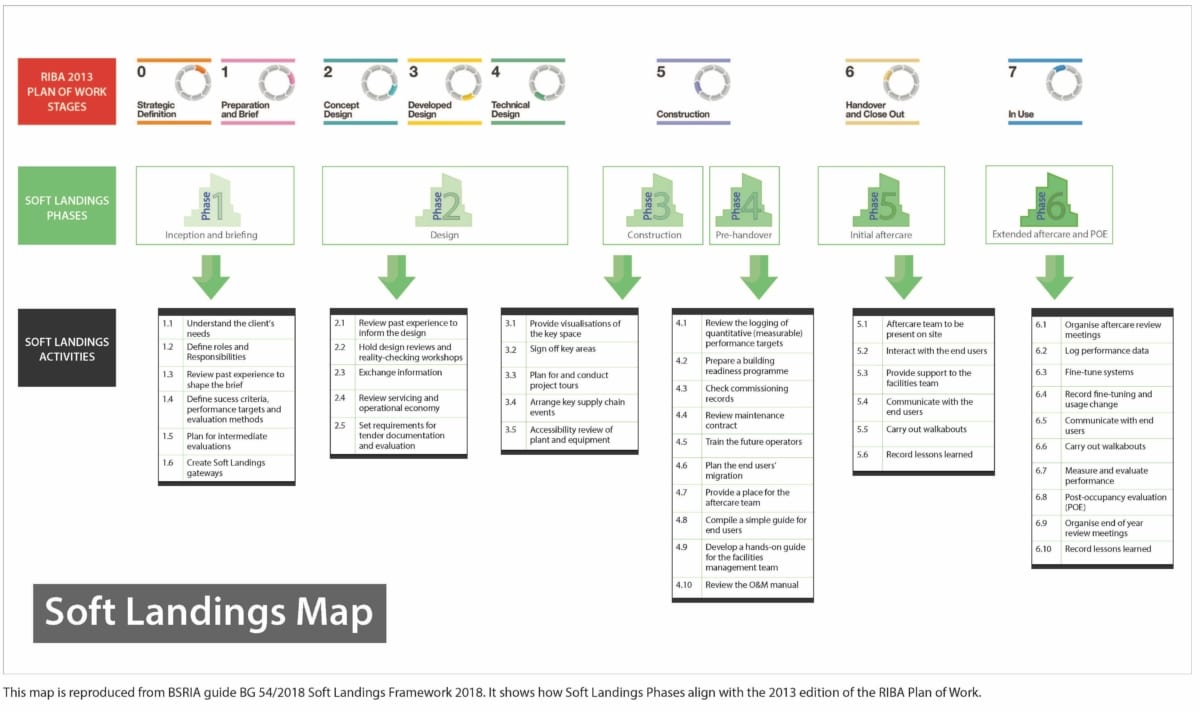SHARE
Thoughts
One topic I am very passionate about is that of ensuring that the buildings we build and operate are fit for purpose. In my mind, this means providing users with an environment to deliver their work in sustainable, efficient buildings that do not impact their wellbeing. For building owners, it is about ‘getting what you paid for’ in terms of efficient design that leads to sustainable operation.
We often find that existing buildings do not operate as they should / could due to age, refurbishment changes, historical maintenance practices and/or BMS set up. This may be shown through high energy consumption, plant equipment impacting asset performance as well as substandard occupant wellbeing and comfort.
Reasons why this is happening need to be understood so that we can adapt and learn for future situations, and in particular, refurbishments. The existing building stock isn’t going anywhere and refurbishments within these properties is going to be important in delivering both sustainability performance (including those aligned with Paris targets) and occupier wellbeing.
Soft Landings – bridging the gap from design to operation
A tool that addresses these issues is Soft Landings. I hear many people refer to Soft Landings as commissioning and handover. This is a misconception. These are critical components of implementing Soft Landings, but it is much more than that. It’s a mindset and approach that should begin at project inception and embed through the whole building’s life cycle. Bridging the gap from design to operation is essential to ensure the building delivers as intended for the end user.
By thinking about the end use at the outset, measurable KPI’s can be established along with roles, responsibilities and ownership. These KPI’s can be championed throughout, with agreed reviews and meetings to understand changes, manage re-occurring problems and capturing the required information to ensure a smooth hand over and aftercare in those early stages of occupancy. Communication and engagement are critical and must play an integral part to ensure information is shared at the right time and interpretation for all level of users is provided where required.
The BSRIA Soft Landings stages and how they align with the RIBA Plan of Work are shown in the diagram below.
Source: BSRIA Soft Landings Framework 2018 (View full-size Soft Landings Map)

Adopting this approach, I believe is a firm step forward in addressing the challenges faced across the built environment. Having honest discussions around what works and why things have gone wrong helps us to build and manage better buildings. This, in turn, helps move towards a sustainable built environment to ensure the real estate industry mitigates its climate change impacts.
It’s not a perfect world and things can go wrong during any stage of a project. Soft Landings is not a silver bullet to solve this. However, it does help identify why and how a problem occurred, providing context and understanding. This is then built into ‘lessons learned’ to improve future project delivery. This in itself is a success story and requires an open approach to project delivery and building operation.
A framework approach
Where possible, Soft Landings should be fully embedded and deployed throughout the project. Not applying the framework in its entirety increases the risk of operational problems, user issues and/or failure in sustainable operation further down the line.
EVORA & EVORA EDGE recognise that this is difficult across many situations. In order to establish the vision of ‘delivering better buildings’, we can support our clients in navigating through the six phases of Soft Landings through the following ways:
Phase 0 & 1:
- Act as the nominated ‘Soft Landings Champion’ on behalf of the client.
- Carry out surveys of existing building to help support key project decisions and KPI’s.
- Define ESG / sustainability objectives, targets, KPIs and responsibilities
Phases 2 to 4:
- Co-ordinating and managing the Soft Landings ‘Gateway’ meetings.
- Providing concept and technical design input to support and advice with regards to building services.
- Ensuring data capture infrastructure is in place e.g. meters and sensors.
Phase 5:
- Facilitating engagement with Stakeholders to identify solutions to impacts on occupant satisfaction and sustainability performance.
- Co-ordinating with the project and operational teams to establish building user guides.
Phase 6 & 7:
- Develop aftercare programmes, including building analytics and utility performance to support ongoing KPIs and performance measurement.
- Conduct Post Occupancy Evaluation surveys
- Providing BREEAM In Use, RESET & Fitwel assessments and certification.
- Providing technical reviews on building system issues to fine tune performance.



